This story starts with a photo album I bought a few years ago. It originally belonged to Mr Antony Bosje, a Dutch man living in Hong Kong in the 1920s. Here he is: (I've since heard from Mr Bosje's granddaughter that this isn't him. His identity is a mystery.)
What was Hong Kong's Dutch community like in the 1920s?
As the sign on the building says, he worked for the Netherlands Harbour Works Co. It's the first time I'd heard of the company, and it got me wondering about the size of the Dutch community in Hong Kong at that time. The 1921 census shows the largest foreign communities in Hong Kong that year:
| Rank | Country | No. of residents in Hong Kong |
Home-country population (millions) |
| 1 | Britain | 7,889 | |
| 2 | Portuguese | 2,057 | |
| 3 | Japanese | 1,585 | |
| 4 | USA | 470 | |
| 5 | Filipino | 232 | |
| 6 | French | 208 | 39.1 |
| 7 | Dutch | 104 | 6.9 |
| 8 | Spanish | 59 | 21.3 |
| 9 | Italian | 56 | 39.9 |
| 10 | Peruvian | 49 |
I was surprised to see the Dutch community was so large. The column on the right shows the 1921 populations of several European countries, and based on them, I'd expect to see the Dutch population lower down the table.
Let's see if the other photos in his album show why the Dutch had such a strong presence in Hong Kong.
The Netherlands Harbour Works Co. at work
The photos all show scenes from the project he was working on. Here he is on a beach, with a steam-driven pile-driver on a barge in the background.
It looks as though they're building a pier or sea wall. Other photos show rocks being broken up, and the side-tipping trucks that were commonly used on reclamation projects.
That last photo with the trucks gives us clues to the project's location. Look for a dark patch in the sky, then the ridgeline below it is Lion Rock, suggesting the photographer is somewhere along the north shore of Hong Kong island. For confirmation, we can also see the tram line, shown by the poles that held the suspended power cables.
The caption on the last photo has an important clue.
Kwik Djoen Eng Esq. laying the first
stone of the first block for the
building of a quai-wall at
North Point Hongkong.
Mr Kwik was their customer. One of Asia's wealthiest men at the time, he'd hired the Dutch company to reclaim two large lots of land from the sea at North Point.
The red outlines above show roughly the extent of those two new lots, Marine Lots 430 and 431. Several local street names still preserve the connection with Mr Kwik - I've labelled them with blue numbers:
(1) - This is Chun Yeung Street, the street where the tram line loops off King's Road, and runs through a street market. "Kwik Djoen Eng" is the sound of his name when pronounced in the Hokkien dialect, but when pronounced in Cantonese it sounds like "Kwok Chun Yeung", and that's where the street name comes from.
(2) - Tong Shui Street runs along the eastern edge of ML 431. When the land was originally reclaimed, it was the harbour wall, with the sea on the eastern side. The street name translates literally to "Sugar Water Street". Mr Kwik had made his fortune in the sugar business, and his grand plan was to build a sugar refinery on this new land, to compete with the Taikoo Sugar Refinery over in Quarry Bay. The sugar refinery was never built, but the street name records the plan.
(3) - Java Road. The source of his sugar was the island of Java. Today Java is part of Indonesia, but in the 1920s it was part of the Dutch East Indies (DEI).
The reason for a large Dutch community in Hong Kong
Now things start getting clearer. The Netherlands, like Britain and France, had a colony in Asia - the DEI. A look at Hong Kong's imports in 1925 shows Hong Kong imported £3.7 Million worth of goods from the DEI, about one twelfth of Hong Kong's total imports for the year. By contrast, the 1925 imports from "Holland" were just £0.1 Million.
So I shouldn't be looking at the Dutch population back in Europe when trying to understand their influence here in Hong Kong. Instead, we should look to Hong Kong's trade with the DEI.
Hong Kong's Trade with the Dutch East Indies
That list of 1925 imports shows Hong Kong's imports from the DEI were split into two main categories - around three quarters by value were in the category "Foodstuffs and Provisions", and the other quarter was listed under "Oils and Fats". The report doesn't give any further breakdown, but I'll assume the majority of the "Foodstuffs and Provisions" trade was sugar, while the "Oils and Fats" were petroleum products. These were two of the commodities that the DEI was famous for at the time.
We can look into the 1925 Jurors List to get an idea of the Dutch companies that were in Hong Kong to service this trade. The biggest is the Asiatic Petroleum Co., Ld., with 71 Jurors. They were the ancestor to the modern Shell company, and handled the petroleum part of the trade.
The rest of the trade was split among several companies: Nederlandsche Handel Maatschappy / Netherlands Trading Society (21 jurors), Transmarina Trading Co. (15 jurors), Holland China Trading Co. (10 jurors), and the Holland Pacific Trading Co. (8 jurors).
Supporting them were a shipping line: Java-China-Japan Lijn (20 jurors), and a bank: Nederlandsch Indische Handelsbank / Netherlands India Com'l Bank / Netherlandsch Indische Com'l Bank (21 jurors).
Questions
The assumptions above seem to make sense, but please leave a comment below if you've spotted any mistakes in my logic, or if you can tell us more about the Dutch community in Hong Kong.
I'm also curious to know what effect Indonesia's independence after WW2 had on Hong Kong's Dutch community. I guess the disappearance of the DEI meant reduced business opportunities for the Dutch companies listed above?
Further reading
We're lucky to have photos of the early Dutch community from a couple of sources:
- The gallery "1920s Marks family photos" has been uploaded by Jan Schultheiss, who writes that his grandfather P. Marks was from the Netherlands, and worked in Hong Kong for the Nederlandsch-Indische Handelsbank.
- Pieter Lommerse has uploaded a large selection of photos related to the Dutch in Hong Kong that he gathered during research for his book, Charles in Shanghai. Charles Gesner van der Voort worked in Shanghai for Holland-China Trading Company (HCHC), which had offices in Hong Kong and Tientsin (Tianjin) also. Pieter's book is about Charles and his friends.
The thread "Dutch roots in Hong Kong" gathers reminders of the Dutch community in Hong Kong.
And though they don't have a Dutch theme, if you'd like more old Hong Kong photos and their stories, Gwulo's books are waiting for you - Volume 1 & Volume 2.
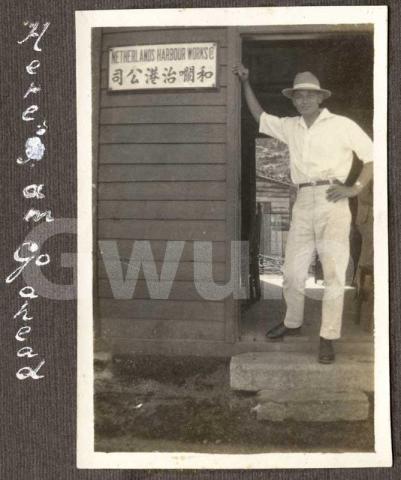

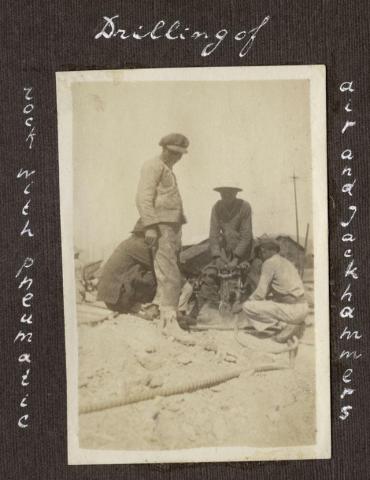
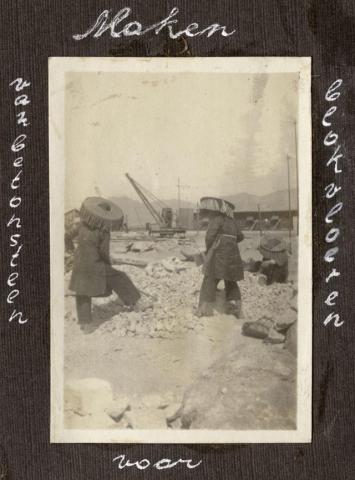
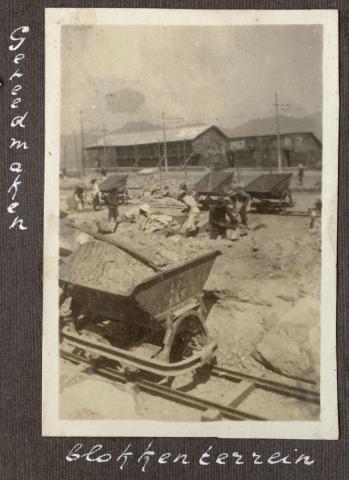
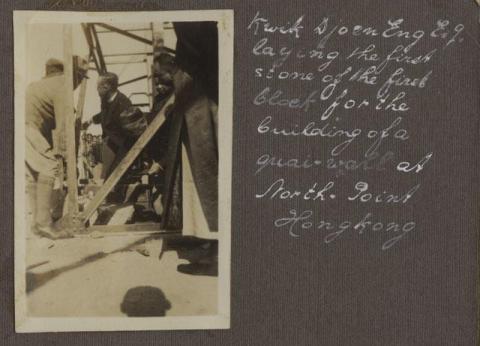
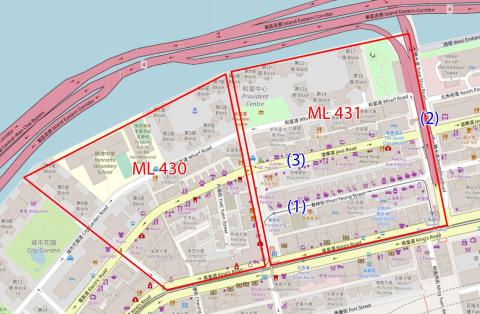
Comments
Post War Java Road
Wikipedia suggests that Java Road was named after the Javanese-Dutch shipping firm, Koninklijke Java-China Paketvaart Lijnen as noted here
I recall in the 1960s, the Royal Interocean Lines (RIL) had its headquarters in the Prince's Building, with a five-storey operational office block at 191 Java Road, just to the east of the North Point Ferry Pier. A history of the RIL can be viewed here
Dutch community in Hong Kong
David,
Thank you for your article about the Dutch community in Hong Kong in the 1920s and referring to my research, very interesting how many things can still be discovered about the past. And reading moddsey's comment on your article, referring to Java Road and KJCPL and its successor Royal Interocean Lines, coincidence or not, yesterday I was passed the contact details of a person who keeps the archives of the Nederlandse Reunisten Vereniging China (Dutch Association of 'Old China Hands', of which many Dutch people who worked in Hong Kong were member, including Charles Gesner van der Voort. The association ceased to exist, but some former members are still alive and very interesting stories have been preserved. Today I received the story of a Dutch person growing up in Harbin and working in Japan before WW2. My new contact used to work for Royal Interocean Lines in Hong Kong in the 1970s, I had an inspiring telephone conversation with him yesterday. More interesting stories are going to result from it, and if they relate to Hong Kong and I get permission to publish them, I shall share them on Gwulo as well.
The association was the successor of Nederlandsch-Chineesche Vereeniging (Dutch-Chinese Association), founded in the 1920s by people who worked in China or were otherwise interested in China. Willem Kien, director of Holland-China Trading Company was member and later he became Vice-President. Some months ago I visited the Amsterdam based International Institute for Social History, which has copies of the three-monthly magazine the association issued. The magazines consisted of text mostly, and there were some interesting photos, some of which are about Netherlands Harbour Works, which also features in your article.
I plan to work on this research material and share it in September.
Kind regards,
Pieter
Treaty Ports and APC
Hello David,
I read this post with considerable interest. By way of general comment, in my travels over the last ten year so around the former Treaty Ports in Greater China, I’ve come across quite a lot of work undertaken by Dutch companies in the past. This mainly related to harbours, breakwaters and anything involving reclaiming land or protecting it from the sea. By the late 19th and early 20th centuries many of the Treaty Ports were upgrading their port facilities as result of increased trade. And Dutch companies, given their experience with the massive water-related projects in their home country, were recognised experts and well placed to win contracts … indeed they still are, of course.
And then there was the Asiatic Petroleum Company or APC as it was generally called. I have a particular interest in APC's two operating companies in China as my grandfather was recruited directly from his public school on the Isle of Man by Shell as a management trainee, and ended up spending 27 years working with APC (North) in China.
Your comment on APC being the ancestor of the modern Shell company is perhaps slightly misleading. APC was a joint venture registered in London between Royal Dutch Petroleum, the Shell Trading & Trading Company (British) and the Paris-based Rothschild family that had oil interests in Russia (a significant supplier to China). Not long after APC was incorporated, the two major partners in the venture merged (but to a certain extent retained their separate identities) to form Royal Dutch Shell. Anyway, rather than babble on about this, I have attached Shell’s booklet on its history in China from 2004. This is freely downloadable from a Shell website: https://www.shell.com.cn/en_cn/about-us/who-we-are/shell-history-in-chi…
Best regards
Nick
re: Sugar & Oil: Dutch Hong Kong in the 1920s
Java Road
Moddsey, I'm not sure if it was named after an individual organisation as Wikipedia suggests, or to reflect the involvement of several DEI companies in the development of that area. Any thoughts?
Dutch community in Hong Kong
Pieter, thanks for keeping us in the loop as you learn more about the Dutch community in Hong Kong. I look forward to reading about your discoveries.
Treaty Ports and APC
Thanks Nick, good to hear about the Dutch companies' work around the region, and that you have a family connection to the APC. Thanks for clarifying the APC lineage too.
Regards, David
Re: Java Road
Perhaps not connected to a particular organisation but as you say connected with the Java trade and/or their involvement in works and development of the area. Appears the road was developed pre-war but it is not mentioned in HKGRO.
Netherlands transliteration
The Netherlands (Holland) was transliterated as 和 口闌 instead of 荷蘭
Dutch trade to Hong Kong
A lot of the Dutch trade was handled by Sir John Pirie of Birchin Lane, Cornhill, London. For some reason unknown, Pirie represented Dutch ships almost exclusively. There was no real competition with his much bigger rival Duncan Dunbar. The 2 seemed to co-exist. Jardine Matheson handled cargoes and the loading and unloading in Hong Kong for both. Pirie's Dutch ships were regulars in Hong Kong, in the 1850s especially, carrying everything from coal to general cargo. Pirie's English ships such as Gipsy called from England in the 1840s without having a DEI connection, but things changed in the 1850s ad ships came via the DEI to HK and were mostly Dutch- such as the Willems de Este, Princess Sophie and Coningen de Nederlande, and Pernica.
Later it was the same ships but by 1858 the Jan van Hoorn had joined the trade.
I agree the main link with Dutch presence in Hong Kong was because of the DEI, and it is strange an Englishman and Lord Mayor of London should be representing the interests there.
Dutch community in Hong Kong
A 1918 photo of what I believe is Netherlands Harbour Works Company at Yantai (Chefoo) can be found here:
https://www.flickr.com/photos/161392673@N02/46845895202/
It is from the archives from Willem Kien, director at Holland-China Trading Company and combined with a book found at the International Institute of Social History, it gives an impression of early harbour works performed by the Dutch, with the help of a lot of Chinese workers.
Netherlands Harbour Works Co. ca. 1925 photos
Dear reader,
I have added three Hong Kong related photos showing Netherlands Harbour Works Co. activities from ca. 1925, when Mr. Bosje was working there. You can find them in Gwulo.com and several more are in this album on Flickr: https://www.flickr.com/photos/161392673@N02/albums/72157711096929438
https://gwulo.com/atom/34448 https://gwulo.com/atom/34449 https://gwulo.com/atom/34450
I was happy to be brought in contact with relatives of an engineer who worked for the company in the 1930s. One of the places he worked was Hong Kong. More about that later.
Kind regards,
Pieter
Netherlands Harbour Works Co. employee Jan Wesselingh photos
Dear reader,
Some time ago I was brought in contact with sons of Netherlands Harbour Works employee Jan Wesselingh, by Theodor A.R. Strauss, 1988-1993 secretary of Nederlandse Reünisten Vereniging China (NRCV, Dutch Reunists Association China), of which Jan Wesselingh was a member. They shared photos with me, which I share with you with their kind permission. There are some questions: where was the 1953 Hong Kong dredging photo taken and what could the figurines in the photo with '7 wise men and a woman' represent? Many thanks for your help!
Kind regards,
Pieter
https://gwulo.com/atom/34474 https://gwulo.com/atom/34475 https://gwulo.com/atom/34473 https://gwulo.com/atom/34472
Netherlands Harbour Works Co. employee Richard Boele photos
Wim Boele shared photos from his family archives, a.o. of his childhood in Hong Kong:
https://gwulo.com/atom/34870
https://gwulo.com/atom/34869
https://gwulo.com/atom/34868
His father Richard (Rick) Boele was employed by Netherlands Harbour Works.
Kind regards,
Pieter
Netherlands Harbour Works Co. Amsterdam Office
In December, I took a walk in the historical centre of Amsterdam and made this photo of the former office of Netherlands Harbour Works.
https://gwulo.com/atom/35273
Kind regards,
Pieter
Trade with NEI and Hong Kong
David,
Getting back to your question about the effect Indonesia's indepence had on Hong Kong's Dutch community. I am not sure if there was reduced business in Hong Kong due to the indepence. I do know that many Dutch companies continued to operate from Indonesia, after the independence. E.g. Internatio-Muller, which took over Holland-China Trading Company in 1948, and which had many offices in Indonesia, continued to operate. By coincidence, my neighbour's father worked for Internatio-Muller in Indonesia and my neighbour was born there. It was not until about 1956, that things got difficult in Indonesia for his family (and other Dutch people I assume), and they moved to The Netherlands.
Meanwhile, Dutch companies in Hong Kong increased their business due to the fact that most foreign businesses in China ended their activities around 1950 and continued to work from Hong Kong.
This week, I received a family photo of my uncle leaving to fight in the war against Indonesian independence, which reminded me of your question.
https://www.flickr.com/photos/charlesinshanghai/51182797108/in/datepost…
Kind regards,
Pieter
re: Trade with NEI and Hong Kong
Thanks Pieter, it's good to hear these first-hand memories to fill in the details.
Regards, David